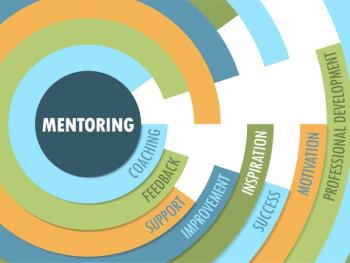
- Vol 32 No 9
- Volume 32
- Issue 9
Quality Counts
"The time is right to use research-informed interventions and implementation strategies to address the quality chasm for mental health care," says to NIMH Director Insel.
FROM THE NIMH
In a classic Woody Allen moment from Annie Hall, the main character says, “There’s an old joke. Two elderly women are at a Catskill restaurant. One of them says, ‘Boy, the food at this place is just terrible.’ The other one says, ‘Yeah, I know. And such small portions.’”
Over the past decade, nearly all of the national conversation about mental health care has focused on the small portions. Parity for insurance coverage, increasing psychiatric beds to reduce incarceration, expanding the workforce-all of these essential efforts were about access, increasing the quantity of care. In a nation in which 55% of counties have no mental health provider, increasing quantity is important.1 In a nation where severe mental illness affects 15% to 24% of prison inmates, there can be little question that we need more beds.2 When a psychiatrist from Boston tells me that it is easier to get into Harvard Medical School than to find a public bed for a psychotic patient in Massachusetts, I understand the need to focus on quantity.
But we need to be thinking about quality as well. There are effective, evidence-based treatments for nearly every mental illness. For those lucky enough to have access to care, what are the odds of receiving evidence-based treatment? A new Institute of Medicine report looks at a part of this question. The report, Psychosocial Interventions for Mental and Substance Use Disorders: A Framework for Establishing Evidence-Based Standards,3 looks specifically at psychosocial treatments, such as psychotherapies. The research is unambiguous: rigorous clinical trials have demonstrated the value of many effective psychotherapies for specific mental disorders across diverse settings. But the pathway from research to practice is strikingly different for psychotherapies compared with medications.
When research shows that a medication is effective, there is a clear regulatory path for approval and consumers can be confident that the pill they receive is identical to the medicine tested in a clinical trial and approved by the FDA. The pathway for psychotherapies is not so clear. There is no FDA equivalent to set standards, and consumers cannot be certain that the therapy offered is identical or even vaguely similar to what was tested in a clinical trial.
As the new report notes, since 1982 there have been calls for a regulatory agency for psychosocial treatments, but there has been little progress in even defining a common language with which to frame guidelines. The Institute of Medicine report states, “. . . the result has been sets of guidelines that often are at odds with one another, and clinicians, consumers, providers, educators, and health care organizations seeking information are given little direction as to which reviews are accurate and which guidelines should be employed.”
Of course, rigorous training can ensure that therapists are delivering something close to the treatment developed in careful trials. Nearly 10 years ago,
While we don’t know everything that’s needed to completely fix the “quality chasm,” we do know enough to start taking immediate action. The time is right to use evidence-based interventions informed by research and implementation strategies to address the quality chasm for mental health care. We don’t need additional research to know that mental health providers should be trained in evidence-based psychotherapies and that mastery of these treatments can become part of credentialing standards. Likewise, while the assessment of quality is complex, we don’t need more research to know that measuring outcomes should be a part of treatment. Of course, we need to make sure we have an efficient strategy for implementing evidence-based therapies and an effective process for improving quality.
A new initiative from NIMH is a step in that direction. It will support the development and testing of tools and strategies for measuring the quality of psychotherapy delivered in real-world practice settings. But even with what we know today, much can be done to improve the quality of mental health care, just as we have done previously for diabetes and heart disease. To reduce suicide, ensure recovery, and improve real-world outcomes, quality will be just as important as quantity. We need to improve both.
Disclosures:
Dr Insel is Director of the National Institute of Mental Health (NIMH) in Bethesda, MD.
Note: This article, originally published on July 14, 2015,
References:
1. Substance Abuse and Mental Health Services Administration. Report to Congress on the Nation’s Substance Abuse and Mental Health Workforce Issues; 2013.
2. Kim K, Becker-Cohen M, Serakos M. The Processing and Treatment of Mentally Ill Persons in the Criminal Justice System A Scan of Practice and Background Analysis; March 2015.
3. England MJ, Butler AS, Gonzalez ML, eds. Psychosocial Interventions for Mental and Substance Use Disorders: A Framework for Establishing Evidence-Based Standards; 2015.
4. Weissman MM, Verdeli H, Gameroff MJ, et al. National survey of psychotherapy training in psychiatry, psychology, and social work. Arch Gen Psychiatry. 2006;63:925-934.
5. Committee on Crossing the Quality Chasm: Adaptation to Mental Health and Addictive Disorders. Board on Health Care Services. Institute of Medicine of the National Academies. Improving the Quality of Health Care for Mental and Substance-Use Conditions. Washington, DC: National Academies Press; 2006.
6. Clark DM. Implementing NICE guidelines for the psychological treatment of depression and anxiety disorders: the IAPT experience. Int Rev Psychiatry. 2011;23:318-327.
7. Karlin BD, Cross G. From the laboratory to the therapy room: national dissemination and implementation of evidence-based psychotherapies in the US Department of Veterans Affairs Health Care System. Am Psychol. 2014;69:19-33.
Articles in this issue
about 10 years ago
A Review of Changes in DSM-5 Sleep-Wake Disordersabout 10 years ago
Sleep-Related Violenceabout 10 years ago
Parasomnias: What Psychiatrists Need to Knowabout 10 years ago
The Correlation Between Sleep Disturbance and Suicideabout 10 years ago
Sleep Disturbances After Traumatic Brain Injuryabout 10 years ago
Koryagin, Suspicious of Glasnost, Recounts Ongoing Soviet Abusesabout 10 years ago
PTSD in DSM-5: Understanding the Changesabout 10 years ago
Weight Loss Associated With Cholinesterase Inhibitors in the ElderlyNewsletter
Receive trusted psychiatric news, expert analysis, and clinical insights — subscribe today to support your practice and your patients.













